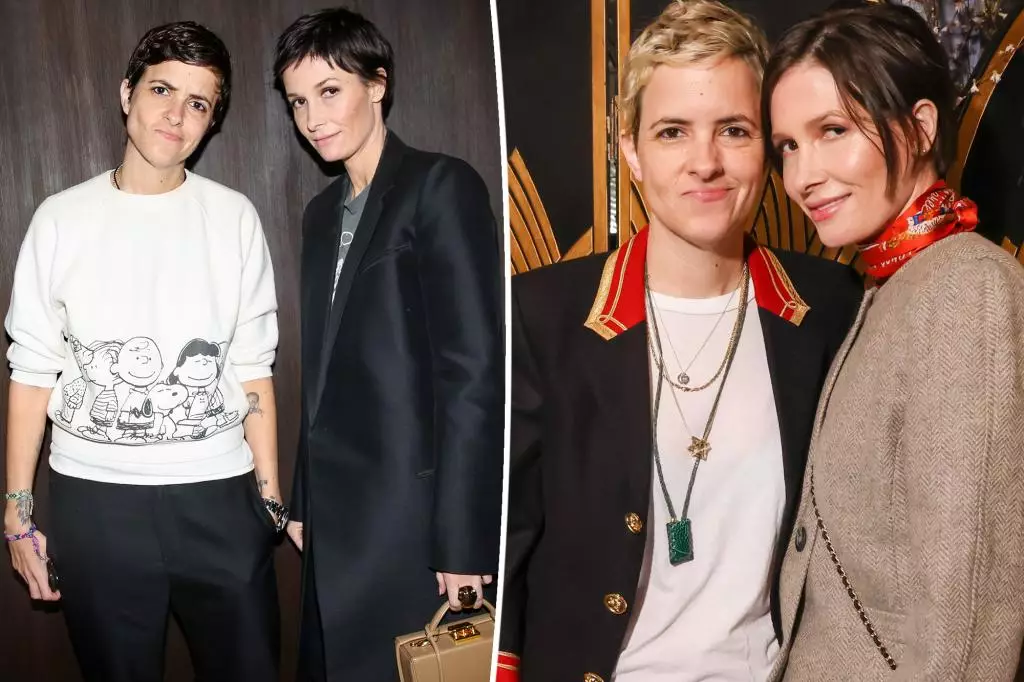In the ever-fascinating realm of celebrity relationships, the recent breakup of Samantha Ronson and Cassandra Grey serves as a stark reminder of both the glamour and fragility inherent in these unions. Their story has unfolded before the public eye and is now punctuated by a poignant and perhaps unsurprising conclusion: the end of their long-term partnership.
Initially reported in 2018, Ronson and Grey’s relationship was a subsequent chapter following the death of Grey’s husband, Brad Grey, former CEO of Paramount Pictures. Their connection blossomed amid the complexities of life, with Ronson as a well-known DJ and music producer. The couple lived in New York City, co-parenting Grey’s son, Jules, showcasing their commitment to family despite the challenges that lurked below the surface. This blending of lives not only created a public narrative but also an intertwining of personal burdens and triumphs as they navigated the social landscape together.
Despite their seemingly strong bond, their relationship was fraught with difficulties. Reports indicate that they had undergone multiple breakups in the past, raising questions about the resilience of their partnership. This cycle of reconciliation and conflict often leaves onlookers wondering if the romantic connection is enduring or simply a temporary reprieve from the inevitable.
Ronson and Grey’s relationship utility was scrutinized not up close and personal, but in the glaring light of celebrity culture. Ronson’s storied past, including her tumultuous affair with actress Lindsay Lohan, adds a layer of complexity to her public persona. The weight of familial expectations and media portrayal undoubtedly influences her romantic life. With a family rich in entertainment history—her brother Mark Ronson winning Grammys and her sister, Annabelle Dexter-Jones, gaining acclaim in her own right—the stakes are even higher.
Conversely, Grey herself had established a name in the beauty industry through her company, Violet Grey, catapulting her into the arena of public admiration and pressure. After selling her business and then repurchasing it, Grey’s entrepreneurial journey has been marked by significant milestones. This realm of success, however, does beg the question of how personal relationships can be affected amid professional pursuits. The breakdown of her romantic partnership with Ronson could have been exacerbated by the stresses related to her business endeavors.
As the partnership comes to an official halt, Ronson and Grey have opted to part ways physically as well as emotionally. Their shared Tribeca apartment, once a symbol of their union, is now on the market—a statement in itself of the relationship’s finality. The fact that they have chosen to rent it out rather than live there underscores the notion that the home they shared is no longer a sanctuary of love but a relic of what once was.
Interestingly, their communications on social media have noticeably diminished, with Ronson’s recent absence from Grey’s birthday shout outs exemplifying this shift. One can ponder if this retreat from public affirmation is indicative of a deeper emotional severance. Ronson’s friends reportedly feel relieved for her newfound singlehood, shedding light on the potentially toxic threads woven throughout her past relationships.
The breakup of Samantha Ronson and Cassandra Grey reminds us that even in a world filled with luxury and public admiration, relationships can be precarious. Their story embodies the journey of navigating love in the spotlight, laden with personal and public pressures that often yield to untenable circumstances.
As fans and observers reflect on the public details surrounding Ronson and Grey, it’s paramount to remember that behind the headlines lies a real emotional landscape. Each romantic relationship endures an intricate web of personal nuances, and sometimes the best course of action is to accept change, however unsettling it may be. This chapter may have closed, but it leaves behind lessons about love, loss, and the ever-challenging pursuit of happiness.

